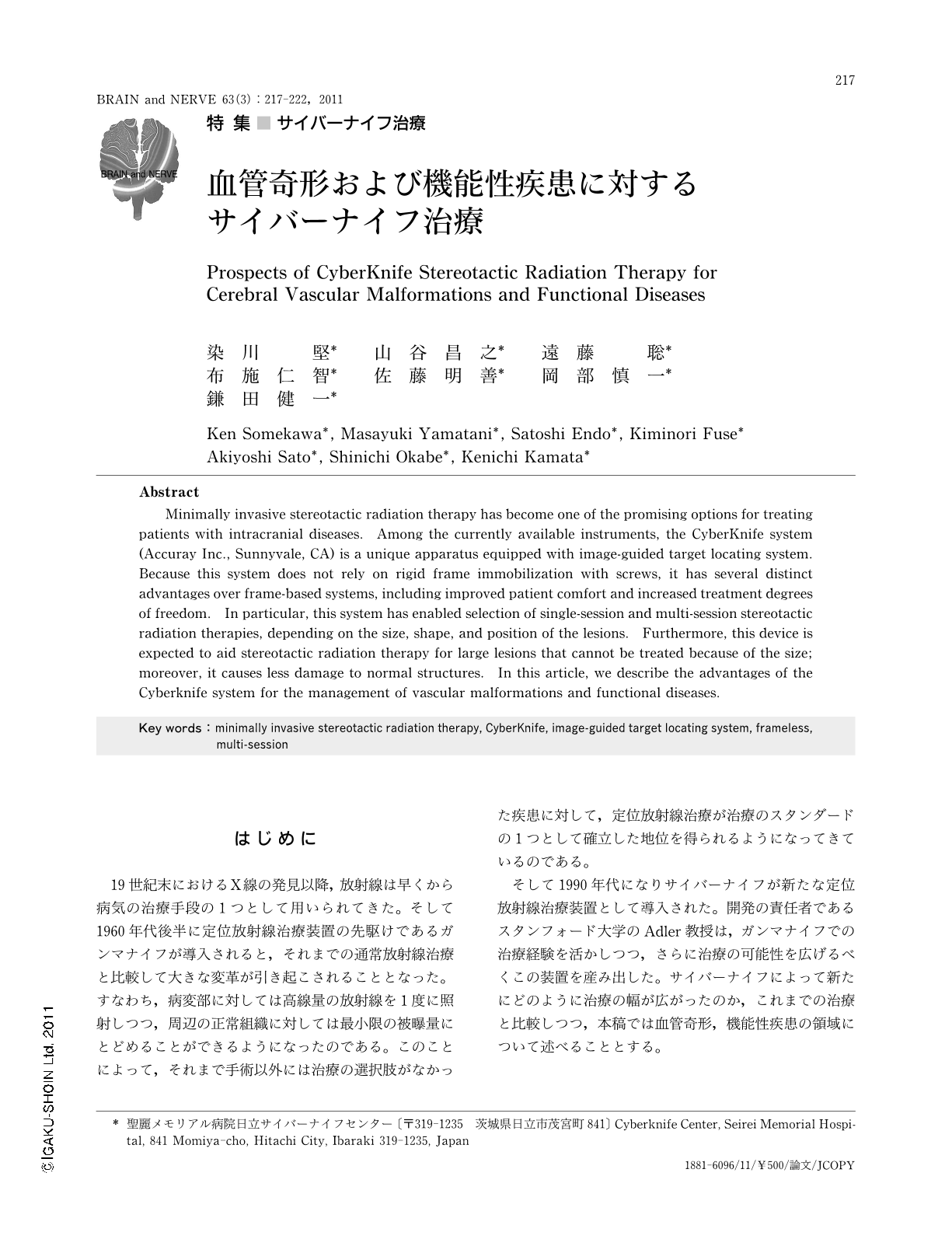Japanese
English
- 有料閲覧
- Abstract 文献概要
- 1ページ目 Look Inside
- 参考文献 Reference
はじめに
19世紀末におけるX線の発見以降,放射線は早くから病気の治療手段の1つとして用いられてきた。そして1960年代後半に定位放射線治療装置の先駆けであるガンマナイフが導入されると,それまでの通常放射線治療と比較して大きな変革が引き起こされることとなった。すなわち,病変部に対しては高線量の放射線を1度に照射しつつ,周辺の正常組織に対しては最小限の被曝量にとどめることができるようになったのである。このことによって,それまで手術以外には治療の選択肢がなかった疾患に対して,定位放射線治療が治療のスタンダードの1つとして確立した地位を得られるようになってきているのである。
そして1990年代になりサイバーナイフが新たな定位放射線治療装置として導入された。開発の責任者であるスタンフォード大学のAdler教授は,ガンマナイフでの治療経験を活かしつつ,さらに治療の可能性を広げるべくこの装置を産み出した。サイバーナイフによって新たにどのように治療の幅が広がったのか,これまでの治療と比較しつつ,本稿では血管奇形,機能性疾患の領域について述べることとする。
Abstract
Minimally invasive stereotactic radiation therapy has become one of the promising options for treating patients with intracranial diseases. Among the currently available instruments,the CyberKnife system (Accuray Inc.,Sunnyvale,CA) is a unique apparatus equipped with image-guided target locating system. Because this system does not rely on rigid frame immobilization with screws,it has several distinct advantages over frame-based systems,including improved patient comfort and increased treatment degrees of freedom. In particular,this system has enabled selection of single-session and multi-session stereotactic radiation therapies,depending on the size,shape,and position of the lesions. Furthermore,this device is expected to aid stereotactic radiation therapy for large lesions that cannot be treated because of the size; moreover,it causes less damage to normal structures. In this article,we describe the advantages of the Cyberknife system for the management of vascular malformations and functional diseases.

Copyright © 2011, Igaku-Shoin Ltd. All rights reserved.


